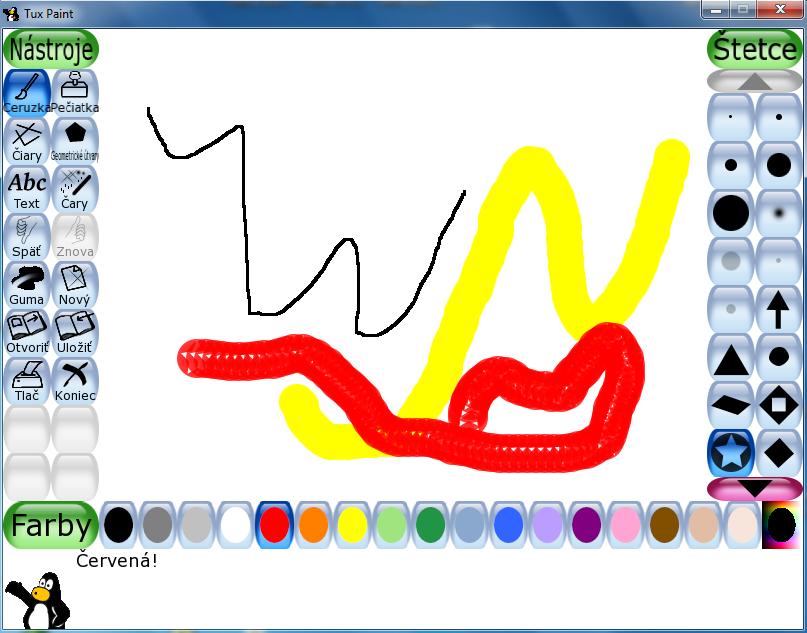
Tux Paint Zadaniya
Aug 27, 2013 - Today, paint less dent removal method is already in use to solve. Dig out your old prom-dress or yellow tux, yr publications and old records.
Contents • • • • • • • • • • • History [ ] Tux Paint was initially created for the operating system, as there was no suitable drawing program for young children available for Linux at that time. It is written in the and uses various free and open source, including, and has since been made available for,, and other platforms. Selected milestone releases: • 2002.06.16 (June 16, 2002) - Initial release (brushes, stamps, lines, eraser), two days after coding started • 2002.06.30 (June 30, 2002) - First Magic tools added (blur, blocks, negative) • 2002.07.31 (July 31, 2002) - Localization support added • 0.9.11 (June 17, 2003) - Right-to-left support, UTF-8 support in Text tool • 0.9.14 (October 12, 2004) - Tux Paint Config. Configuration tool released, Starter image support • 0.9.16 (October 21, 2006) - Slideshow feature, animated and directional brushes • 0.9.17 (July 1, 2007) - Arbitrary screen size and orientation support, support, support • 0.9.18 (November 21, 2007) - Magic Tools turned into plug-ins, text rendering Features [ ].
Drawing with the Paint tool Tux Paint stands apart from typical graphics editing software (such as or ) that it was designed to be usable by as young as 3 years of age. The is meant to be intuitive, and utilizes, audible feedback and textual hints to help explain how the software works. The brightly colored interface, and cartoon mascot (, the mascot of the Linux kernel) are meant to engage children.
Tux Paint's normal interface is split into five sections: • Toolbox, containing the various basic tools (see below) and application controls (, save, new, ) • Canvas, where the are drawn and edited • Color, where colors can be chosen (when applicable to the current tool) • Selector, providing various selectable objects (e.g., brushes, or sub-tools, depending on the current tool) • Information area, where instructions, tips and encouragement are provided A simple feature allows previously saved images to be displayed as a basic flip-book or as a slide. Basic drawing tools [ ] Like most popular graphics editing and composition tools, Tux Paint includes a paintbrush, an eraser, and tools to draw lines, and text. Tux Paint provides multiple levels of and, allowing accidental or unwanted changes to be removed while editing a picture. Files and printing [ ] Tux Paint was designed in such a way that the user does not need to understand the underlying or how to. The 'Save' and 'Open' commands were designed to mimic those of software for devices, such as the handheld. When one saves a picture in Tux Paint, they do not need to provide a name or for where to place it.
When one goes to open a previously saved picture, a collection of of saved images is shown. Similarly, printing is typically a 'no questions asked' process, as well. Advanced drawing tools [ ]. Tux Paint Config., a graphical configuration tool for Tux Paint As features are added to Tux Paint, options have been added that allow parents and teachers to disable features and alter the behavior to better suit their children's or students' needs, or to better integrate the software in their home or school computing environment. Typical options, such as enabling or disabling sound effects and full-screen mode are available. There are also options that help make Tux Paint suitable for younger or children, such as displaying text using only letters or ignoring the distinction between buttons on the. Localization [ ] Tux Paint has been into numerous languages, and has support for the display of text in languages that use non-Latin character sets, such as,,.
As of June 2008, over 80 languages are supported. Correct support for complex languages requires. And descriptive sounds for stamp imagery can also be localized. Tux Paint includes its own form of support, allowing entry of non-Latin characters using the 'Text' tool. Japanese ( and Romanized ), Korean () and Traditional Chinese are currently supported. Distribution [ ]. Tkp 169 2009. ', drawn using Tux Paint Tux Paint is included with the software that comes with the.
External links• from Square One • from Autodesk • on Ecotect • about Ecotect acquisition from Autodesk. Analysis Analysis is the process of breaking a or substance into smaller parts in order to gain a better understanding of it. The technique has been applied in the study of and since before (384–322 ), though analysis as a formal concept is a relatively recent development. Autodesk ecotect analysis 2011 x86 crack.
It is also a standard package in educationally oriented, such as Jr. And, as an optional package in numerous other Linux distributions, as well as part of numerous educationally oriented Linux.
It is included in various software collections for Windows (such as and ), as well as in collections for Windows, since it can be run as a stand-alone application (without needing to be installed system-wide). Tux Paint is also available as an activity within the free and open source educational suite. See also [ ].